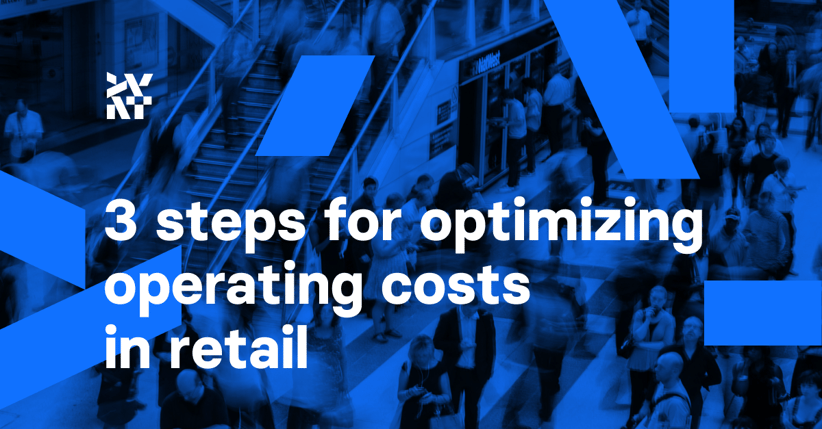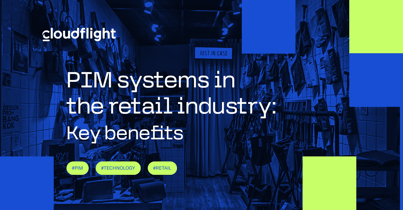Like any retail business owner, you understand the importance of optimizing the operating costs of your store and freeing up capital that can be used to develop your venture further. The tricky part is knowing how to optimize operating costs without passing the expense onto your customers.
First off, what exactly are operating costs? Simply put, operating costs are the continuous expenses that occur from the ongoing operation of your business. They occur daily and are one of the most significant factors that affect the bottom line of your business.
If you have even a little experience in retail, you know that the quality of the product is a non-negotiable and constant expense that will go a long way in determining the success or failure of a business. Making customer satisfaction and loyalty a priority has been proven to be a highly effective strategy, but if you go about it the wrong way, it can quickly become expensive.
Fortunately, there are many ways you can optimize your costs without having to sacrifice quality or borrow beyond your means. In this post, we’ll take a closer look at how retail costs work and the steps you can take to optimize your retail business’s operating costs.
Separating the good from the bad
Before you set out on a project to optimize your retail costs, it’s important to separate the good costs from bad costs. By doing so, you’ll know what to target after any cost audit.
Good costs
Good costs are any costs that are essential to keep your business ticking. These also include anything that actively drives revenue that you wouldn’t have had otherwise.
Standard operating expenses, like rent or mortgage payments, internet, and payment processing fees, fall under this category. Many of these are unavoidable, but as long as they serve a clear purpose and don’t take a considerable proportion out of your profit margins, they can be considered a “good” expense.
Existing alongside these are costs that aren’t necessarily essential for the business to stay afloat but those that can drive additional profit to your store. A good example is a strong marketing initiative or a uniquely cheap deal on stock from a supplier. These comprise their own category of good costs and can be considered “great” costs.
Bad costs
Bad costs are any costs that eat into your profit margins without producing any tangible benefit. For example, imagine you’re paying for a 1,000-square-foot retail premise. If you’re only using 300 square feet of that space for the running of your business, then the rent, lighting, and other expenses tied to the remaining 700 square feet can all be classified as “bad” expenses.
Obviously, it can be hard to identify bad costs when they’re a fraction of a broader “good” cost you need for your business’s basic operations. That’s especially true when you don’t have a reliable way to project what your business would look like with certain costs eliminated. However, analyzing these costs at a granular level and taking calculated risks with your cost-cutting is essential to optimizing your operating costs.
How to optimize your costs
Now that we have an overview of how expenses work in a retail business, let’s run through three of the most effective practical steps you can take to optimize your retail costs.
1. Audit your labor expenses
Wages are among the highest costs in any type of business. We’ll assume that your workforce is already as small as possible while still being able to provide the quality experiences that your customers expect and deserve. The next step towards optimizing your labor expenses is reviewing your approach to managing human resources.
There are plenty of workforce management platforms on the market that will help you take care of routine tasks, such as monitoring employee attendance, performance reviews, and payroll. However, in order to truly streamline your expenses, you’ll need to chart your own course and analyze your business’s unique situation.
Set aside some time to understand exactly what your labor costs are paying for, the staff activities that have positive and negative impacts on your bottom line, and where unproductive time could be better reinvested. If you’re not too “Big Brother” about the process and explain how the results of your activities will make life easier and more productive for your staff, this kind of auditing will be well received within your workforce.
Once you’re equipped with these insights and follow them up with well-planned training modules, your staff will spend less time on the tasks that don’t generate profit. That also means that they’ll have more time to spend on the tasks that do increase revenue and be able to nurture a much stronger ROI for your labor costs.
2. Audit your financial software
Far too many businesses have great opportunities to cut costs right under their nose. They simply don’t have the right tools to identify them.
If your business is still relatively young, you may have been able to grow it using mostly “vanilla” software, like excel templates. Though the life of an entrepreneur doesn’t leave a lot of spare time to audit the tools, these kinds of projects can go a long way towards making sure your money is being spent as wisely as possible.
Simple changes, like investing in a portable card machine and ditching your personal account for an online business account, can make your business infinitely easier to manage. They equip you with comprehensive transaction histories, streamlined tax filing, and more reliable security. These features, and others, can take a lot of the manual work out of your accounting and open your eyes to cost optimization opportunities that you may have never considered.
When migrating to new financial software, make sure that whatever software suites you choose will align with your long-term business goals. Simpler tools might work just fine for your business in its current state. However, as you scale, you may need to adopt tools that allow several users at once, mobile versions that can be accessed from anywhere, and other features.
If you define your processes according to one tool and then find that it just isn’t cutting it further down the line, you’ll only have to spend more time and energy finding the right tool for the job. So, do your homework.
3. Worry more about retention and less about acquisition
Any good entrepreneur understands the importance of growth. Correspondingly, it follows that many retail business owners have a tendency to pool all their resources into acquiring new customers.
Though it’s certainly important to keep your business growing at a healthy pace, contributing more resources to customer retention will pay off. You’ll get not only a better return on your work but also unlock more cost-efficient ways to grow your sales.
It’s long been known that retaining existing customers costs businesses far less than acquiring new ones. Although your marketing initiatives might seem like an obvious “good” cost on the surface, you could, in fact, be wasting money that’s better invested in retention efforts.
Loyalty programs, marketing campaigns specifically for customers who have reached certain thresholds, and seeking customer feedback to improve shopping experiences will help you to retain customers. You’ll foster better loyalty in your customers and stimulate more word-of-mouth marketing that will drive your acquisition with no direct cost to you.
With a core group of loyal customers who are delighted by your products and level of service, your profits will increase while operating costs decrease. This provides your business a stream of passive revenue that’s far more valuable than moderately successful marketing costs.
Final thoughts
We hope this guide has helped you towards a clearer view of your retail operating costs and highlighted some new opportunities to make your business as cost-efficient as possible.
By developing a clear view of your cash flow, zeroing in on inefficiencies, and taking steps to remedy them, you’ll be able to enjoy lower overheads, higher margins, and more spare capital with which to scale!
Published August 23, 2022












